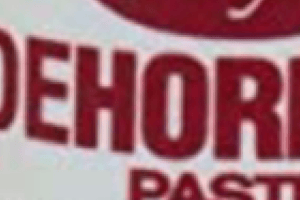Podcast
Questions and Answers
Dehorning is primarily an elective procedure, exceptions being cattle with fractured horns or osteomyelitis. As a surgical procedure, dehorning is one of the oldest and most common procedures done on ______.
Dehorning is primarily an elective procedure, exceptions being cattle with fractured horns or osteomyelitis. As a surgical procedure, dehorning is one of the oldest and most common procedures done on ______.
cattle
Notwithstanding illustrations of cows in many children’s books or on craft items such as cow saltshakers or towels, most ______ in countries with a developed bovine industry are dehorned.
Notwithstanding illustrations of cows in many children’s books or on craft items such as cow saltshakers or towels, most ______ in countries with a developed bovine industry are dehorned.
cattle
Although horns are useful to cattle in the wild state, dehorned cattle are safer for handlers and other ______.
Although horns are useful to cattle in the wild state, dehorned cattle are safer for handlers and other ______.
cattle
Effective January 2001, Australia has excluded horned ______ from transport in the export market in an attempt to improve cattle welfare and economic efforts.
Effective January 2001, Australia has excluded horned ______ from transport in the export market in an attempt to improve cattle welfare and economic efforts.
Aside from some polled breeds (e.g., Polled Hereford and Polled Shorthorns), most beef and dairy cattle would have ______ if they were not removed.
Aside from some polled breeds (e.g., Polled Hereford and Polled Shorthorns), most beef and dairy cattle would have ______ if they were not removed.
Historically, some breeds, particularly Ayrshires, were prized for their ______, and much effort was put into training horns to shape for show purposes.
Historically, some breeds, particularly Ayrshires, were prized for their ______, and much effort was put into training horns to shape for show purposes.
In northern climates, cattle 18 to 36 months old often had their ______ cut off on a cold winter day and were turned outdoors, perhaps after placement of a tourniquet across the poll, so the frigid air would help constrict spurting and dripping blood vessels to stem the bleeding.
In northern climates, cattle 18 to 36 months old often had their ______ cut off on a cold winter day and were turned outdoors, perhaps after placement of a tourniquet across the poll, so the frigid air would help constrict spurting and dripping blood vessels to stem the bleeding.
For veterinarians in food animal practice, the surgery is repetitive and not especially challenging. Over th______
For veterinarians in food animal practice, the surgery is repetitive and not especially challenging. Over th______
Flashcards are hidden until you start studying
Study Notes
Dehorning Overview
- Dehorning is primarily an elective procedure, with exceptions for cattle suffering from fractured horns or osteomyelitis.
- It is one of the oldest and most common surgical procedures performed on cattle.
Dehorned Cattle
- Most cattle in developed countries with a robust bovine industry are routinely dehorned, despite representations of horned cattle in children's literature and memorabilia.
- Dehorned cattle are considered safer for handlers and other animals.
Welfare Regulations
- Australia implemented regulations in January 2001, banning the transport of horned cattle in the export market to enhance cattle welfare and economic performance.
Breeds and Historical Practices
- Most beef and dairy cattle would naturally have horns if not surgically removed, with the exception of certain polled breeds like Polled Hereford and Polled Shorthorns.
- Historically, some breeds, such as Ayrshires, were valued for their horns, and breeders often trained the shape of horns for exhibition purposes.
Surgical Techniques
- In northern climates, cattle aged 18 to 36 months often had their horns cut off during cold winter days, utilizing frigid outdoor temperatures to promote blood vessel constriction and minimize bleeding.
- For veterinarians specializing in food animal practice, dehorning surgery is a repetitive task that does not present significant challenges.
Studying That Suits You
Use AI to generate personalized quizzes and flashcards to suit your learning preferences.




